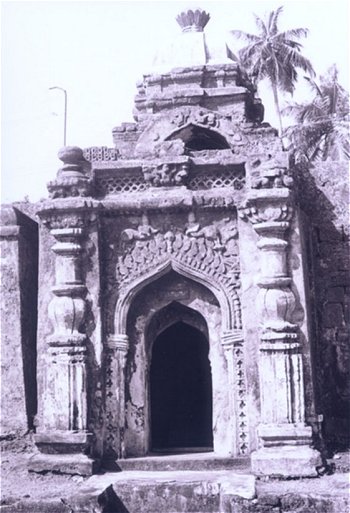Kadambas of Banavasi
by Dr. Jyotsna Kamat
First Online: February 20, 2005
Page Last Updated: December 07, 2024
Like Gangas of Talkadu, Kadambas are earliest sovereigns in Karnataka. The early rulers had sway over major part of Karnataka, and parts of Goa and Maharashtra. Talagunda inscription of C450 C.E states that Mayursharma was the progenitor and the dynasty got the name because of the Kadamba tree considered holy which grew at their early house. Recently found inscriptions take their history earlier.
But the fact remains that Mayursharma a Brhamin youth, after completion of Vedic studies available locally, went to ghatikasthana at Kanchi, capital of Pallavas. Ghatika or ghatikasthana was an institution of higher learning. For reasons, not stated, Mayura was humiliated by the royalty at the time of Ashwamedha( horse sacrifice). Mayura became furious and decided to take up arms, giving up his Vedic learning. "The hand skillful in handling Kusha grass, fuel, stone, ghee, ladle and vessel (these are all the apparatus handled by the Brahmin priests for Vedic rituals), unsheathed a flaming sword eager to conquer earth" reads the inscription.
Thus Mayurasharma became Mayuravarma (a Kshatriya) and became adept in arms. He built up an army and trained them in guerilla warfare. He defeated several chieftains and Bana king. The Pallavas were forced to accept his supremacy.
He made Banavasi (in North Kanara District) his capital. His kingdom comprised of hilly region, western coast and Chitradurga district. His son Kanga succeeded him. Bhageeratha and Raghu ruled thereafter.
K.L. Kamat/Kamat's Potpourri
Decorated Entrance of Banavasi Temple
Kadamba kingdom reached its zenith under Kakustha (C405-30 C.E). He was a great builder. His prominence is proved by the fact that the great Gupta king, Skandagupta married one of his daughters. A second daughter was married to Ganga king Madhava. Such marital ties established strong diplomatic ties and confirmed independent status for long.
Shantivarman and Mrigeshavarman who followed were also strong kings. Ravivarman's rule was the longest (c485-519 C.E). He extended his kingdom up to Godavari in North, Pennar river to south and Kolar in the east.
The later rulers were weak. Dynasty of Kadambas branched out. There were Kadamba rulers of Hanagal, Chandavar and Goa. Goa rulers had a glorious rule, which deserves special mention. The last king of Chandavar, who called himself a descendent of Banavasi Kadambas, was a subordinate of Saluva or Salva king of Gersoppa according to an epigraph of 1378 C.E.
K.L. Kamat/Kamat's Potpourri
Madhukeshwara Temple, Banavasi
Apprx. 8th century A.D.
Huen Tsang the Chinese traveler-monk who was in India between 630-644 C.E, visited Konkanapura or Banavasi. He has recorded that there were a hundred monasteries of both Hinayana and Mahayana sects with 10,000 Buddhist monks and priests. A monastery was dedicated to Sarvana Siddha (Buddha). A huge sandalwood image of Buddha- Mitreya had miraculous powers. Sandalwood was the prime product of Banavasi region (Malenad). Huen Tsang's special mention of sandalwood Buddha makes carvers of sandalwood (Gudigars) famous since ancient times.
![]()

